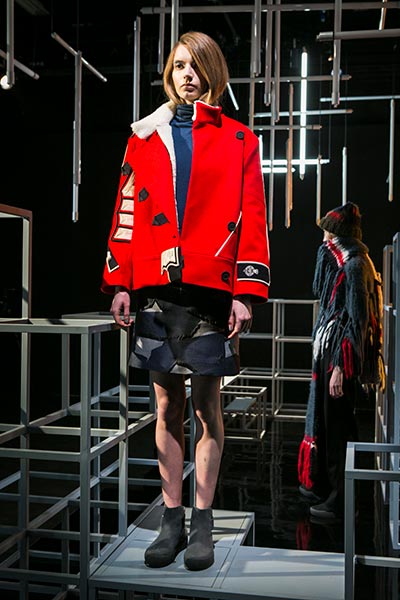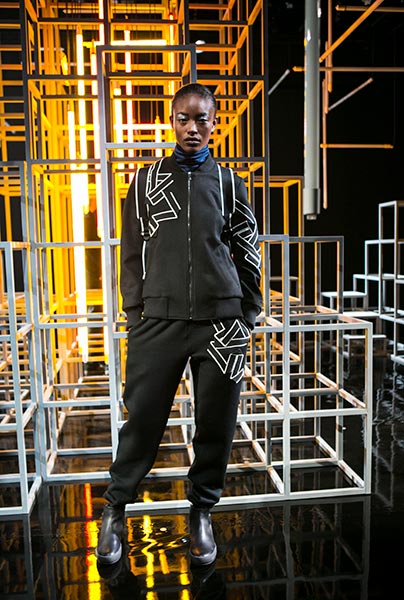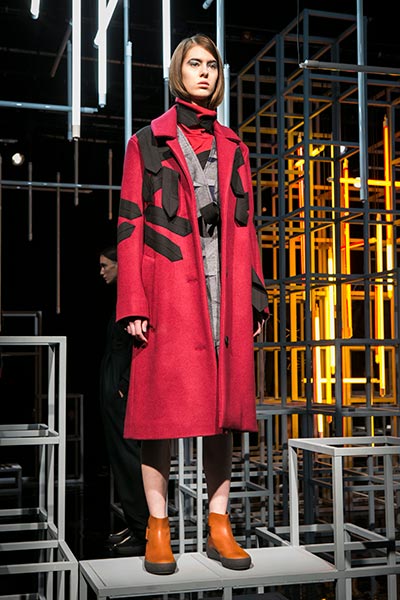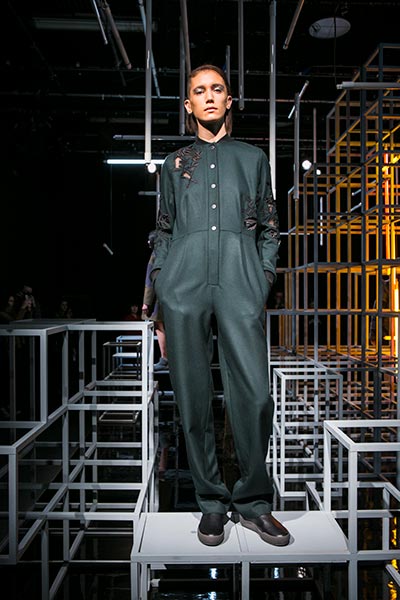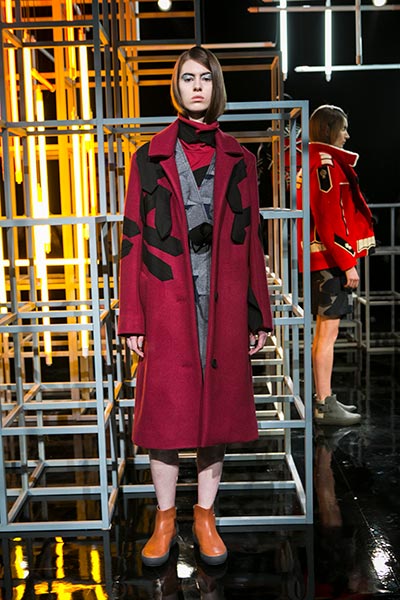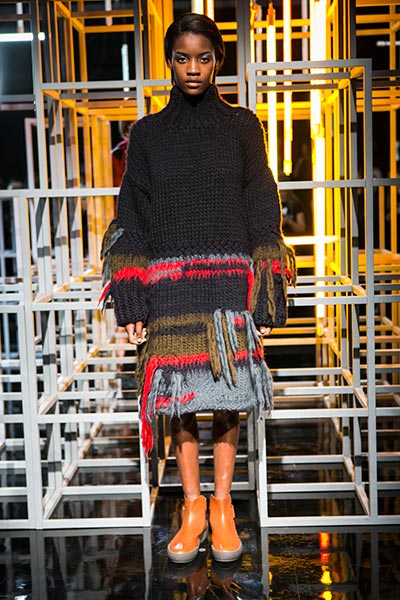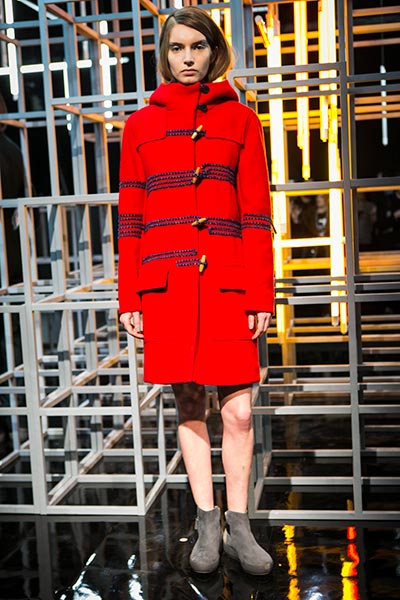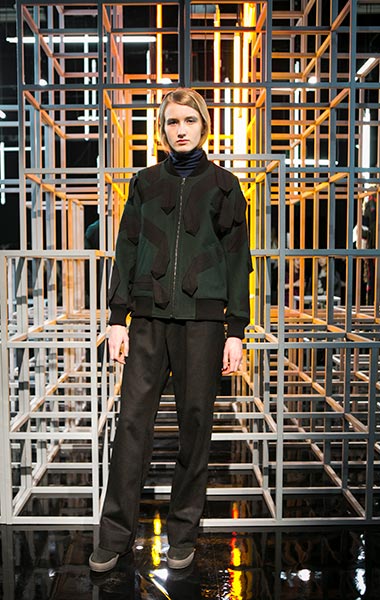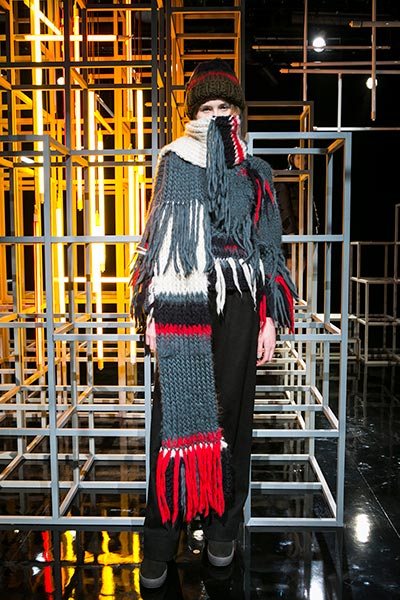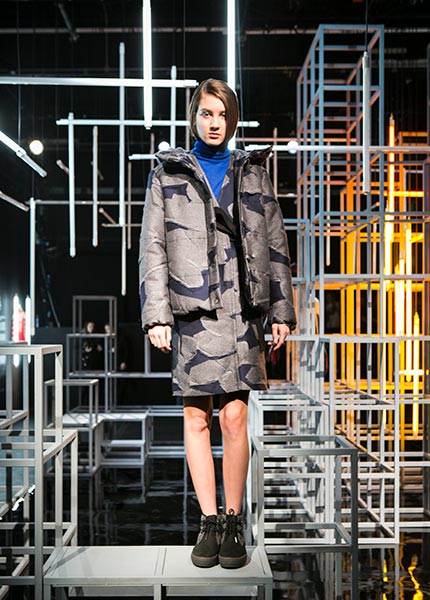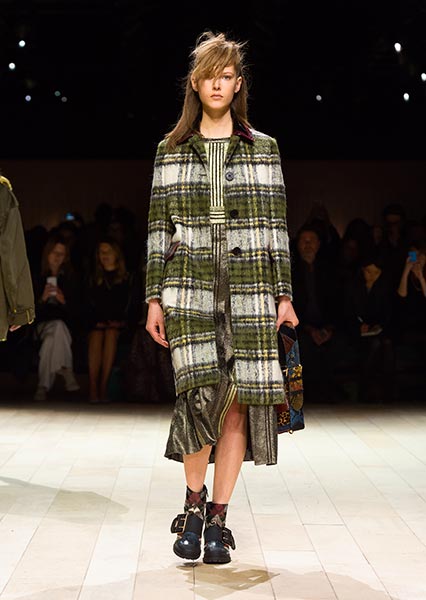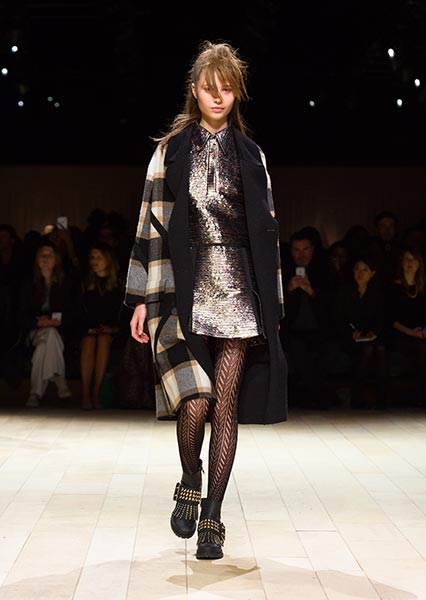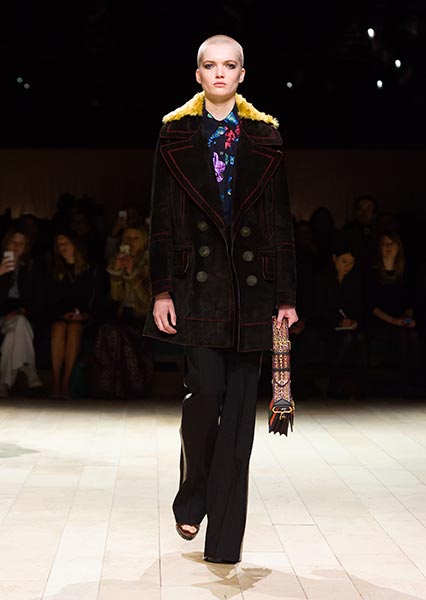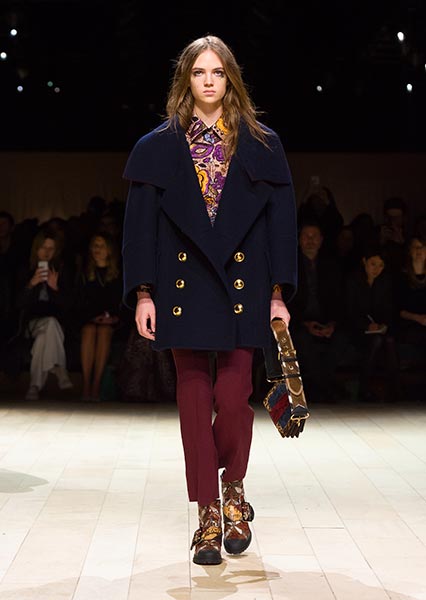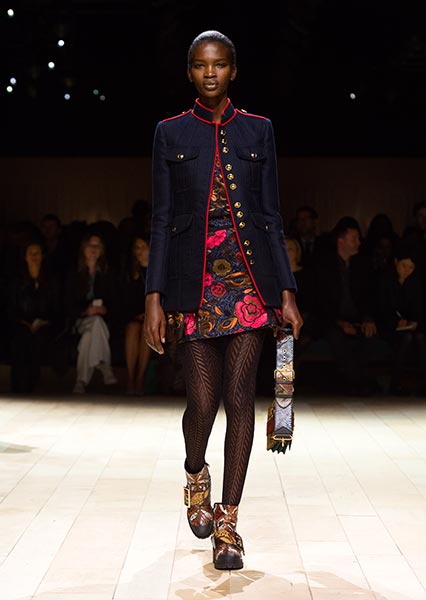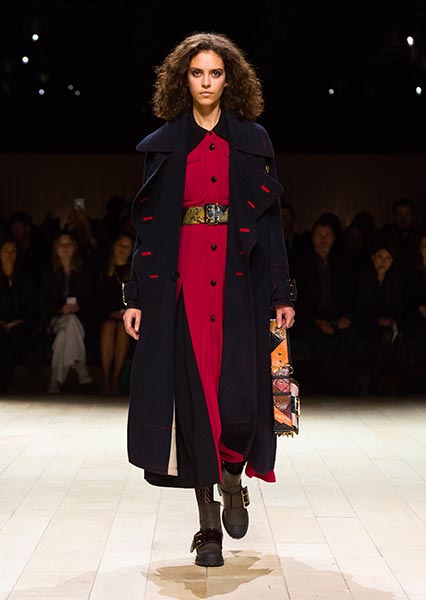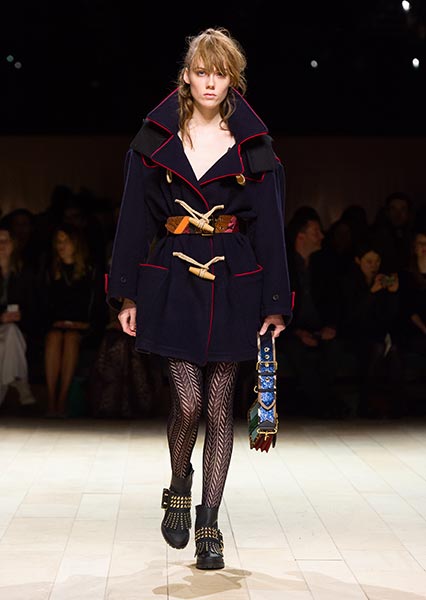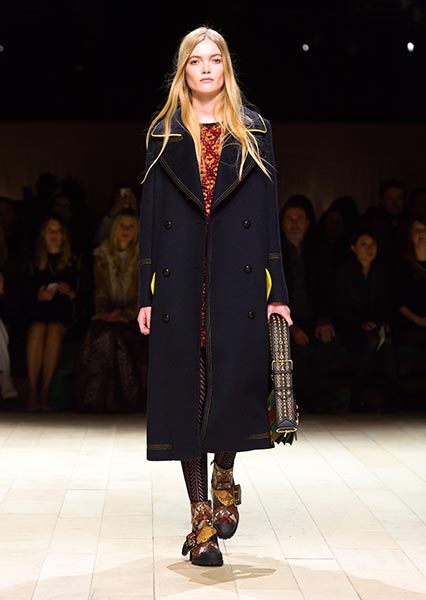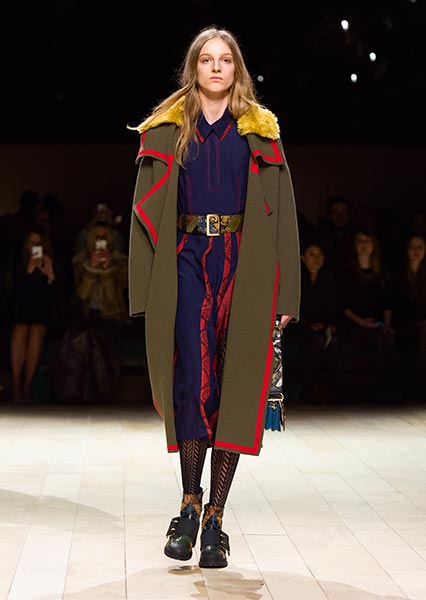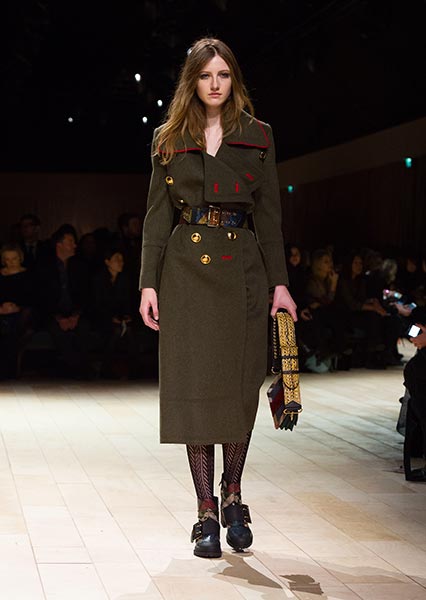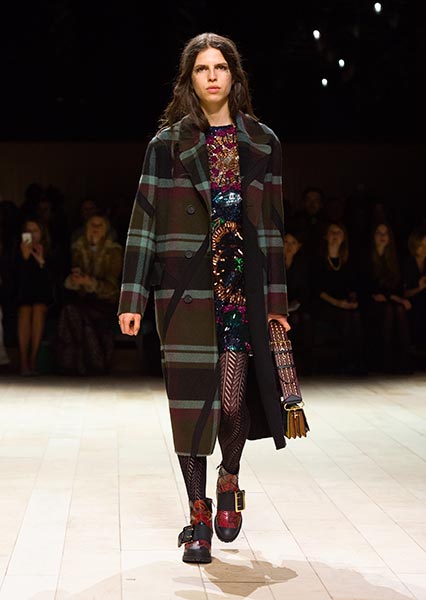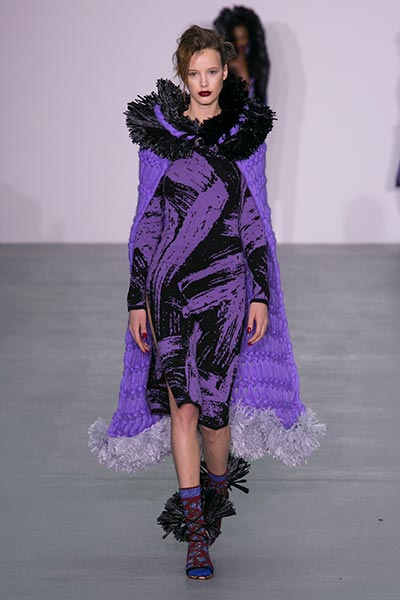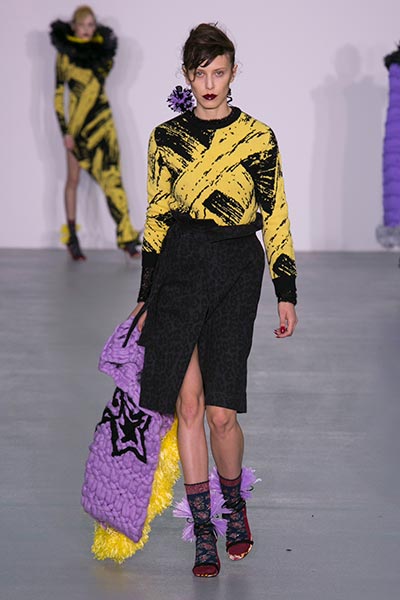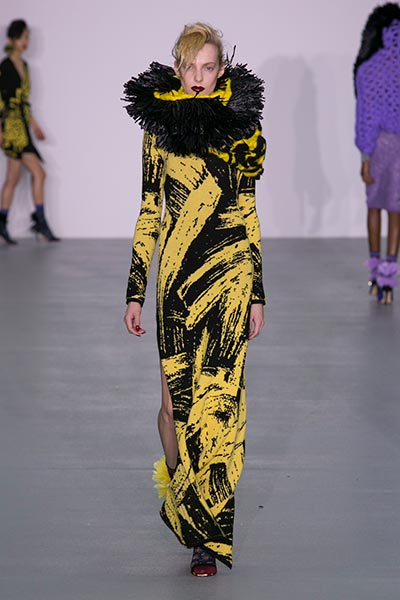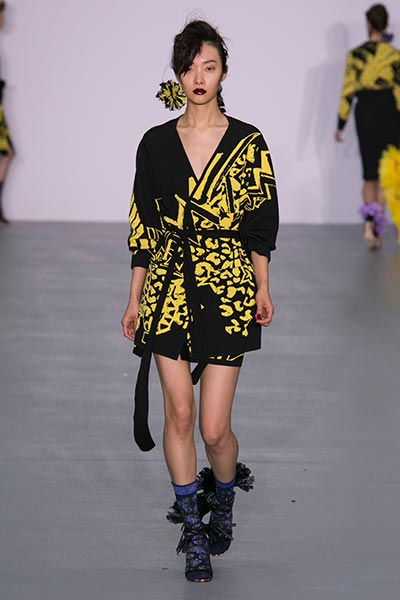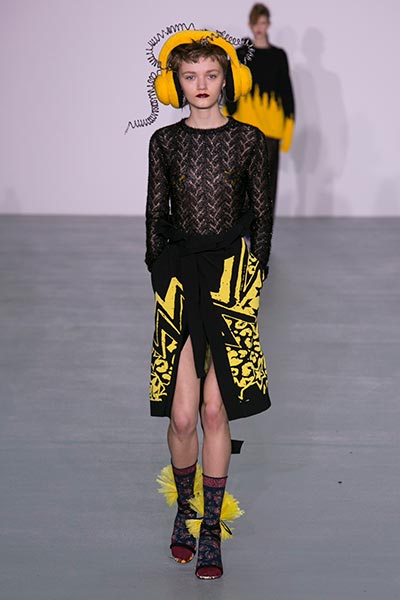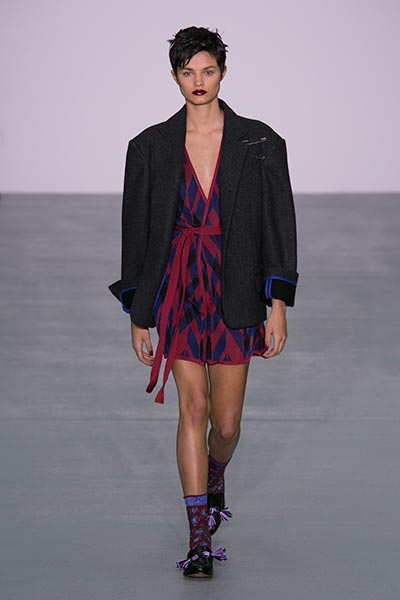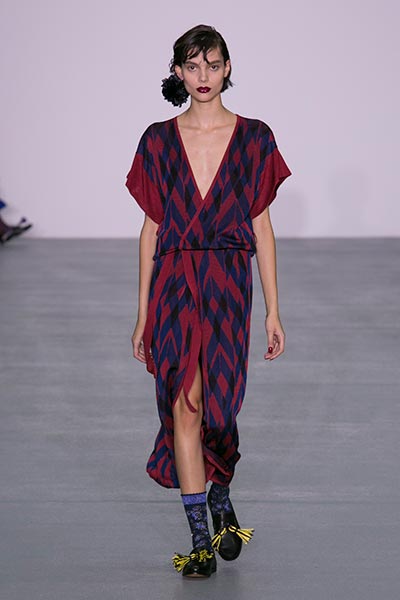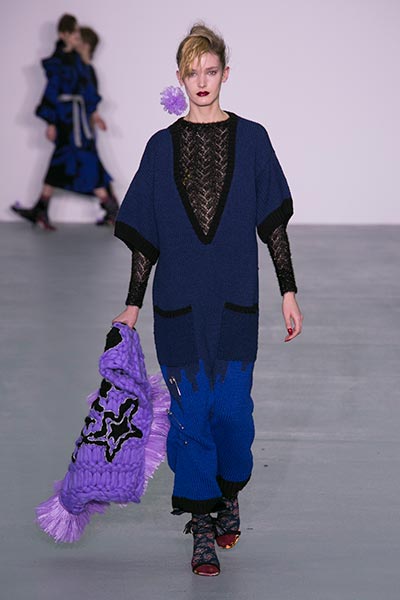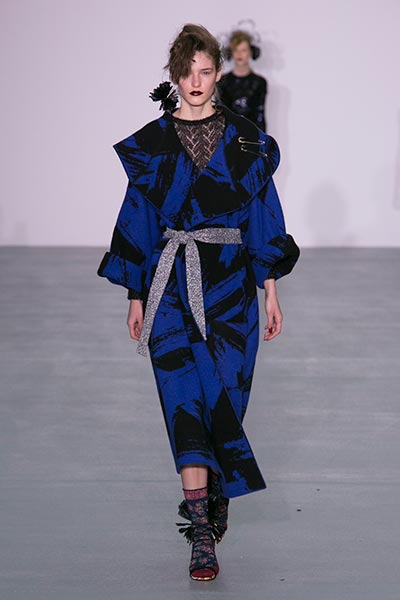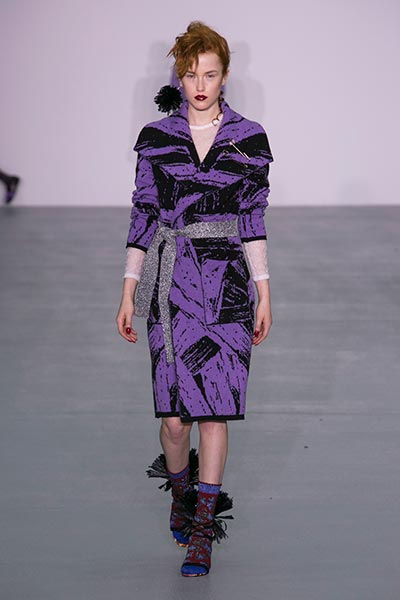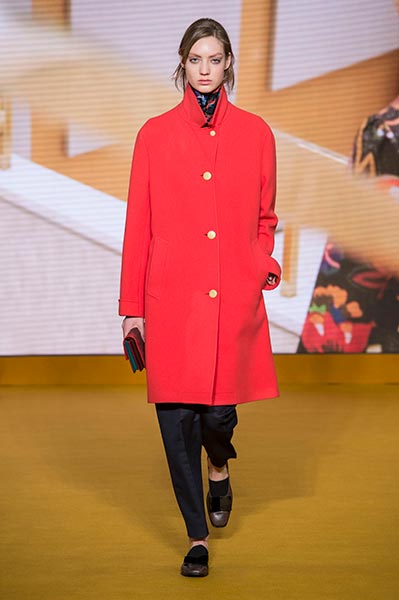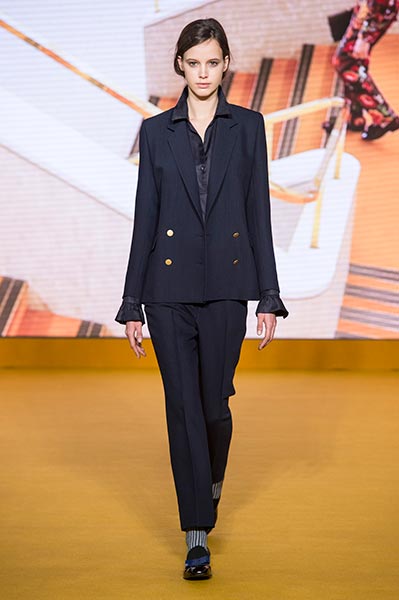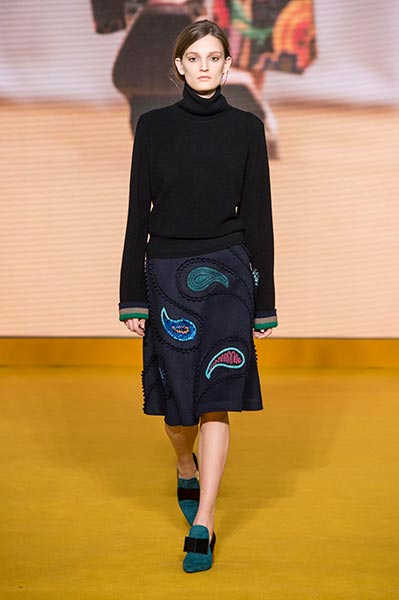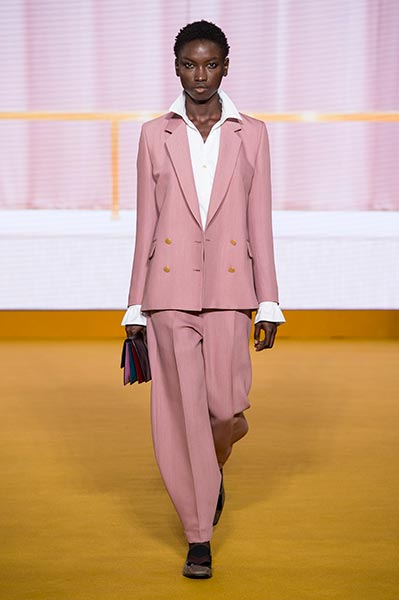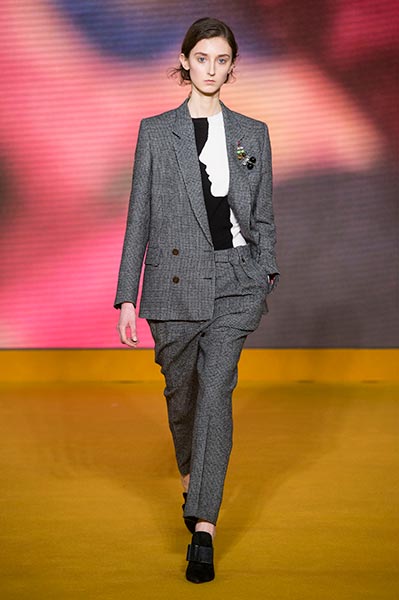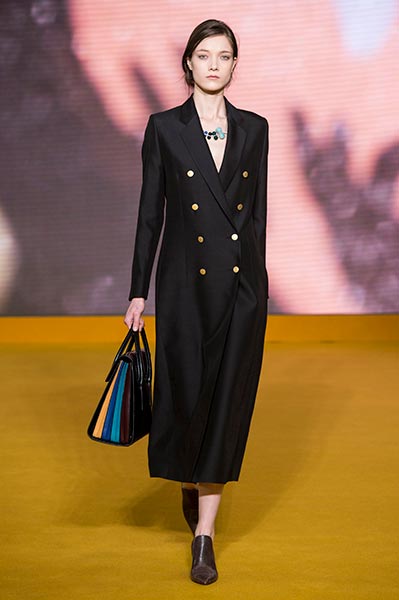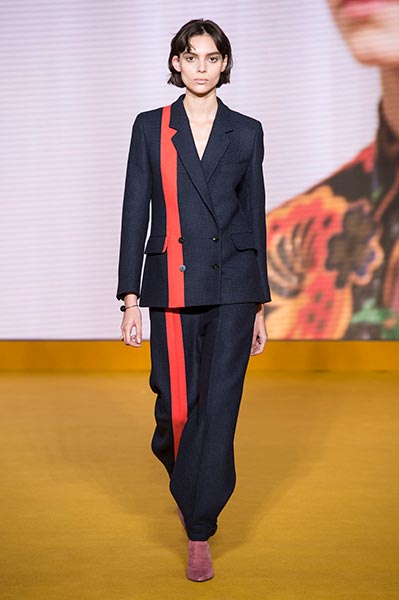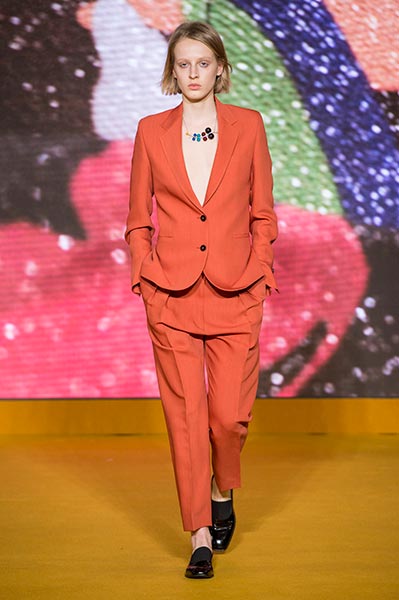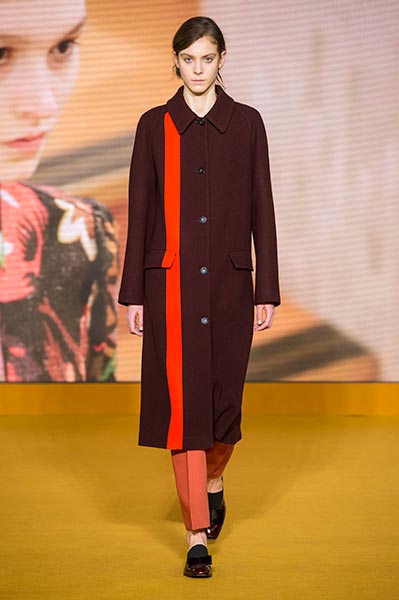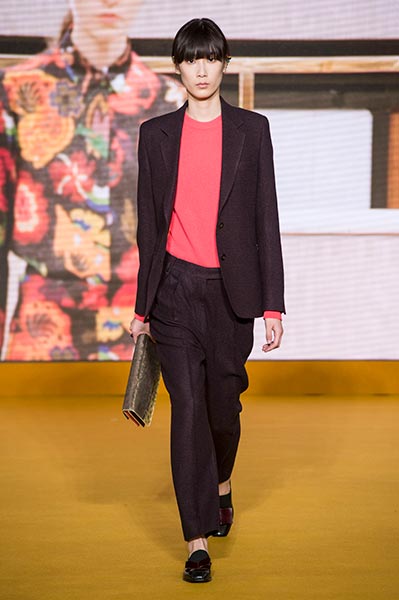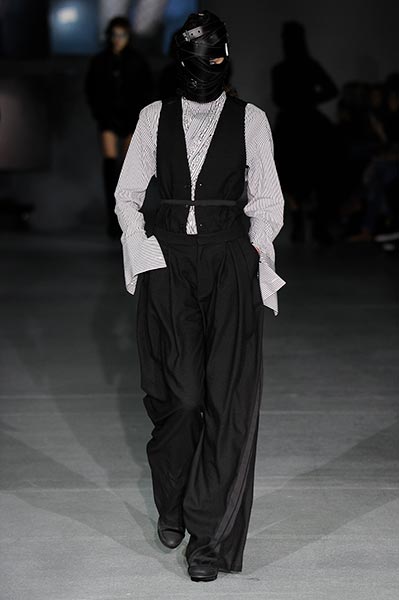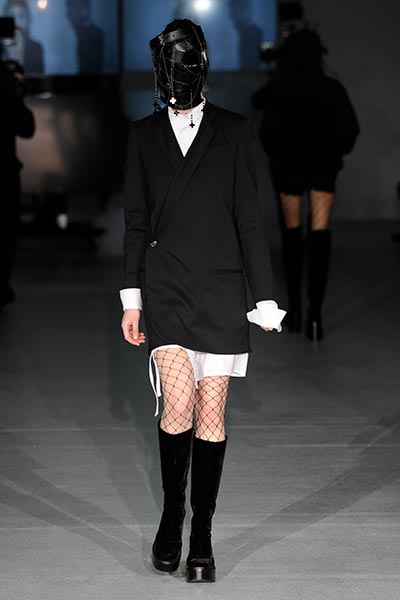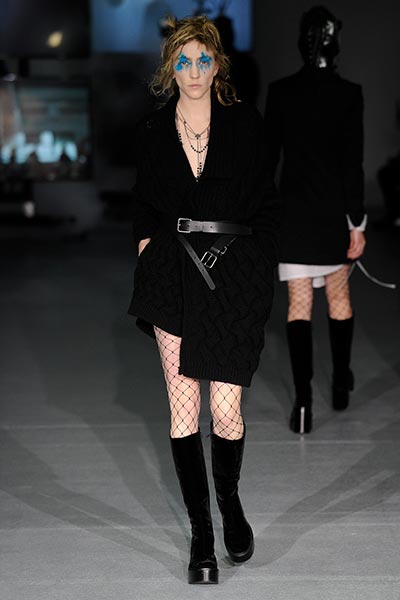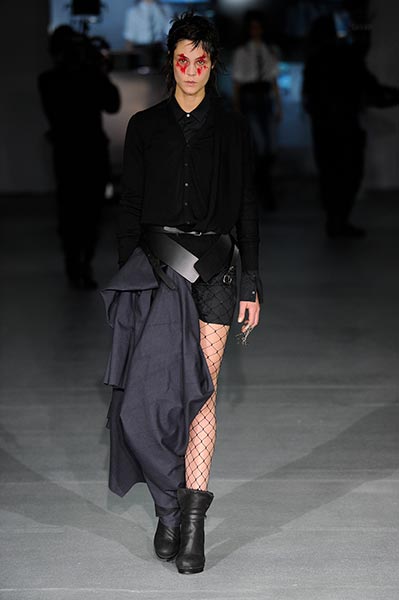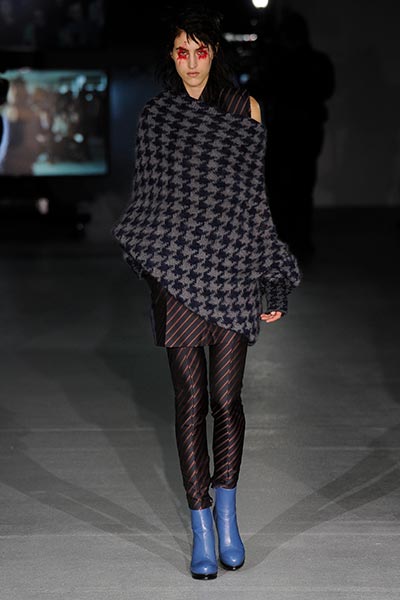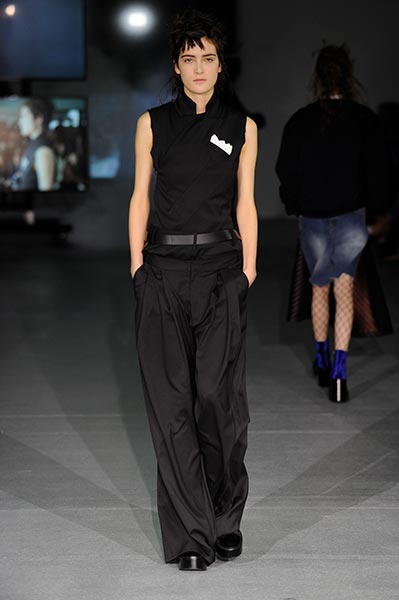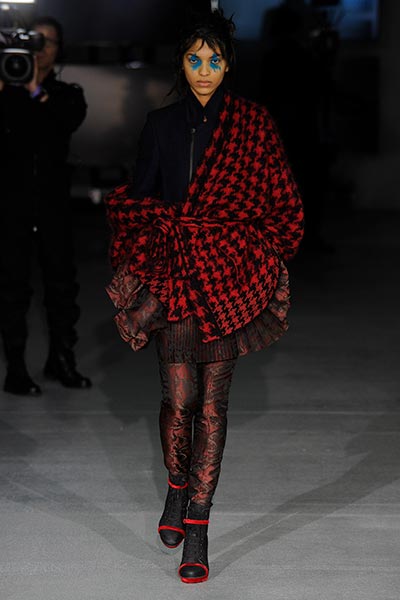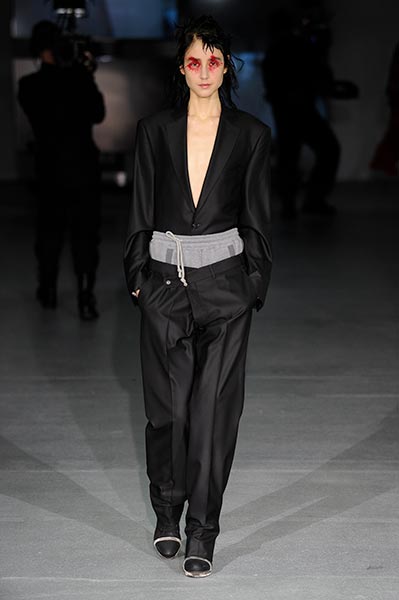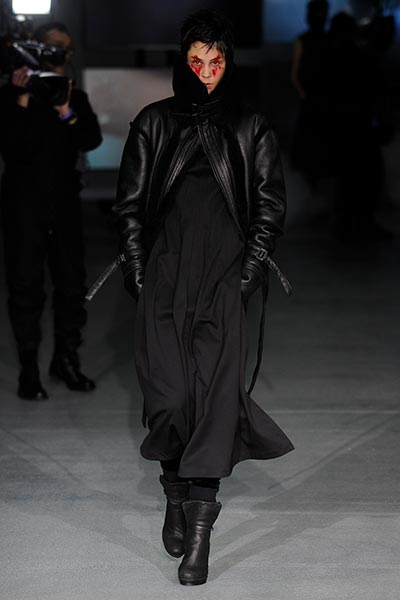London Fashion Week has always been known as the bedding place of young talent. What happens though when that bedded-in talent takes off, grows and becomes the establishment? They start to hone in on what is signature to them, and so Christopher Raeburn returned to his love of historical military garb. To mark this collection of historical pomp and ceremonial combat, he worked with The Woolmark Company to place Merino wool centre stage in his wide gauge chunky knitwear, rich military frock coats with deconstructed ribbonry and innovative wool-filled puffa jacquard jackets, inspired by decorative taping, and soft, lightweight next to skin base layer knits and dresses. It was a collection that set a benchmark for how a designer can exploit every facet of a single fibre, and showcase its ability to innovate and evolve. It also took Raeburn back to his sustainable beginnings as a designer who came from London Fashion Week’s Esthetica scheme, with his support of wool’s biodegradable and renewable properties.
Christopher Raeburn
The military bent was also felt at Burberry, where army green and navy wool overcoats were paired with shinier and glossier counterparts underneath. Bailey must have been thinking about the ritual of grabbing a masculine overcoat to wear over a sequined party dress. Christopher Kane’s ‘isolated woman’ was on an off-kilter path with Loden flecked wool bikers jackets offset with shaggy wool cuffs and collars. This same yarn would explode into giant tactile scarves and cardigans to give Kane’s deliberate chaos a complementary texture to his ostrich feathers and crochet flowers.
Burberry
Sibling was also thinking about practical coats over shining glad rags. This time around, Cozette McCreery and Sid Bryan took their collection disco dancing and showed us how knitwear could be sensual and, inevitably, sweat-drenched. Disco ball-appropriate Lurex knits dominated but they were contrasted with Merino wool mannish tailoring (borrowed from a guy on the dance floor and its menswear show), jacquard paint stripe wrap coats and oversized hand knit shawls trimmed with knit raffia. These lofty Merino wool counterparts gave heft to the flimsy nightlife knits – perfect for when you emerge from a hot club and duly get plunged into the cold night.
Sibling
Loose tailoring also reigned at Paul Smith, where any notion that a suit automatically means something serious dissipated when it was rendered in the jolliest of hues and adorned with paisley embroidery. A single stripe of red would streak a black wool suit and oversized coats would be drenched in plum and orange. The playful introduction of the paisley motif didn’t interfere with Smith’s savvy ways with relaxed tailoring, which also came in the form of his Travel Suit, carrying across from the designer’s menswear line. Strip away the S&M masks and the menacing video cameras that trailed the models on the runway and A.F. Vandevorst’s debut in London was rife with Scabal wool jackets and wide-legged trousers that would form cornerstones in a woman’s wardrobe. A single button wool tuxedo dress was the sought after piece, indicative of the duo’s Belgian heritage.
Paul Smith
Holly Fulton was also looking at the humble paisley pattern as it became her main motif, as inspired by David Inshaw’s 1973 painting The Badminton Game. The paisley teardrop runs riot on wool parkas and off-the shoulder dresses with hobble skirts and rounded shoulders, with a Smedley collaboration coming through in soft Merino wool next to skin knitwear pieces in the collection. A similar generosity of volume was also evident at Osman Yousefzada’s show, where opium-derived poppies and Lady Di high-necked ruffle fronted shirts represented a more experimental turn from the designer. Merino wool came to the fore in more grounded looks such as a navy casual suit with tracksuit bottom trousers.
AF Vandervorst
Elsewhere wool took hold in the most unexpected of guises. At Pringle, under new creative director Fran Stringer, knitted underwear and corsetry detailing took hold to revisit the idea that 200 years ago, knitwear was used purely as underwear, and even swimwear. Louise Trotter at Joseph also rebelled with her knits with heavy-looking yarn jumpers that are embroidered with extra skeins, lopsided proportioned wool jackets with elongated sleeves and enlarged check trousers that look like a cheeky take on golfing gear. Mix it up, mess it up and see what happens. That’s the experimental bent that London designers excel at.
